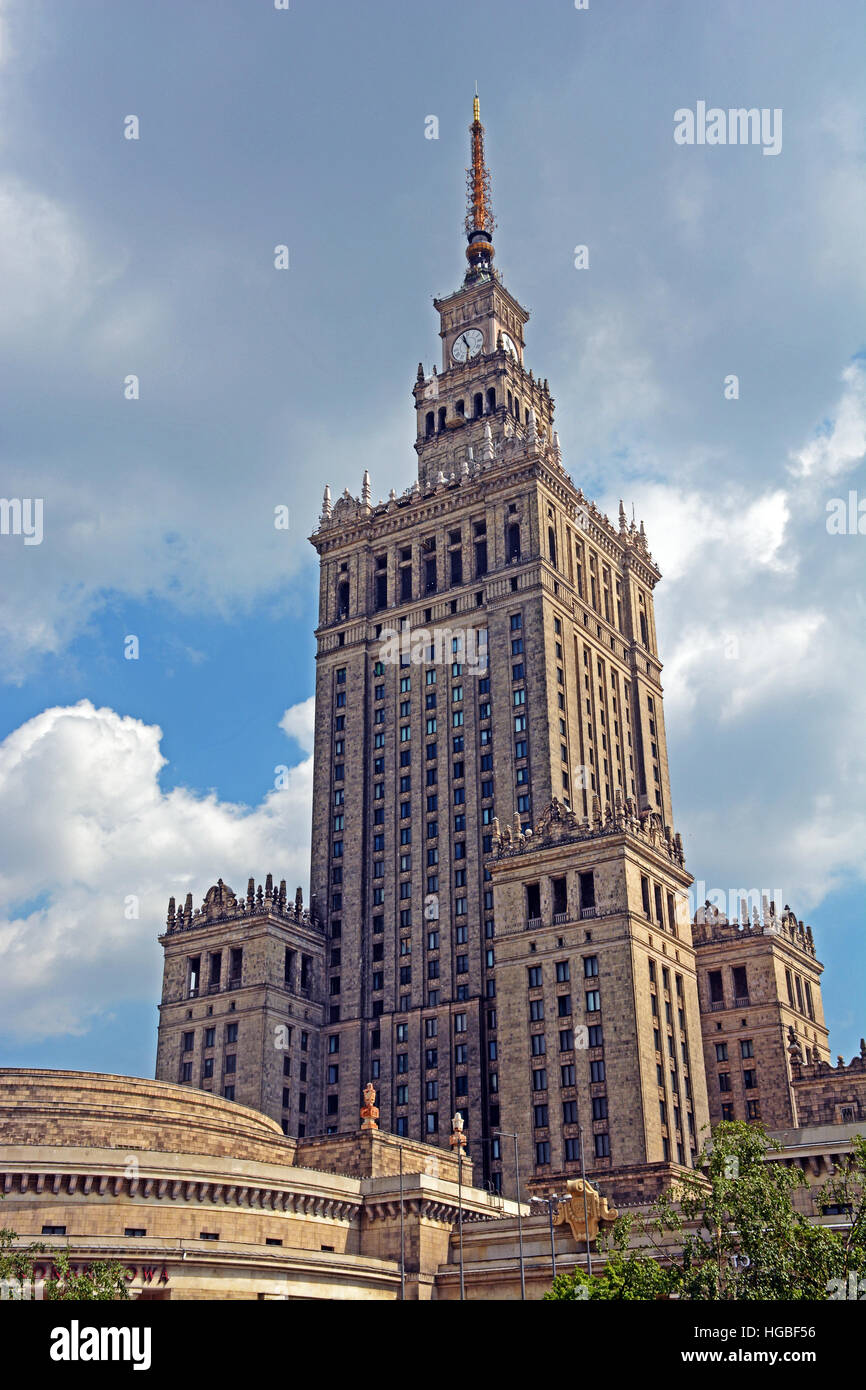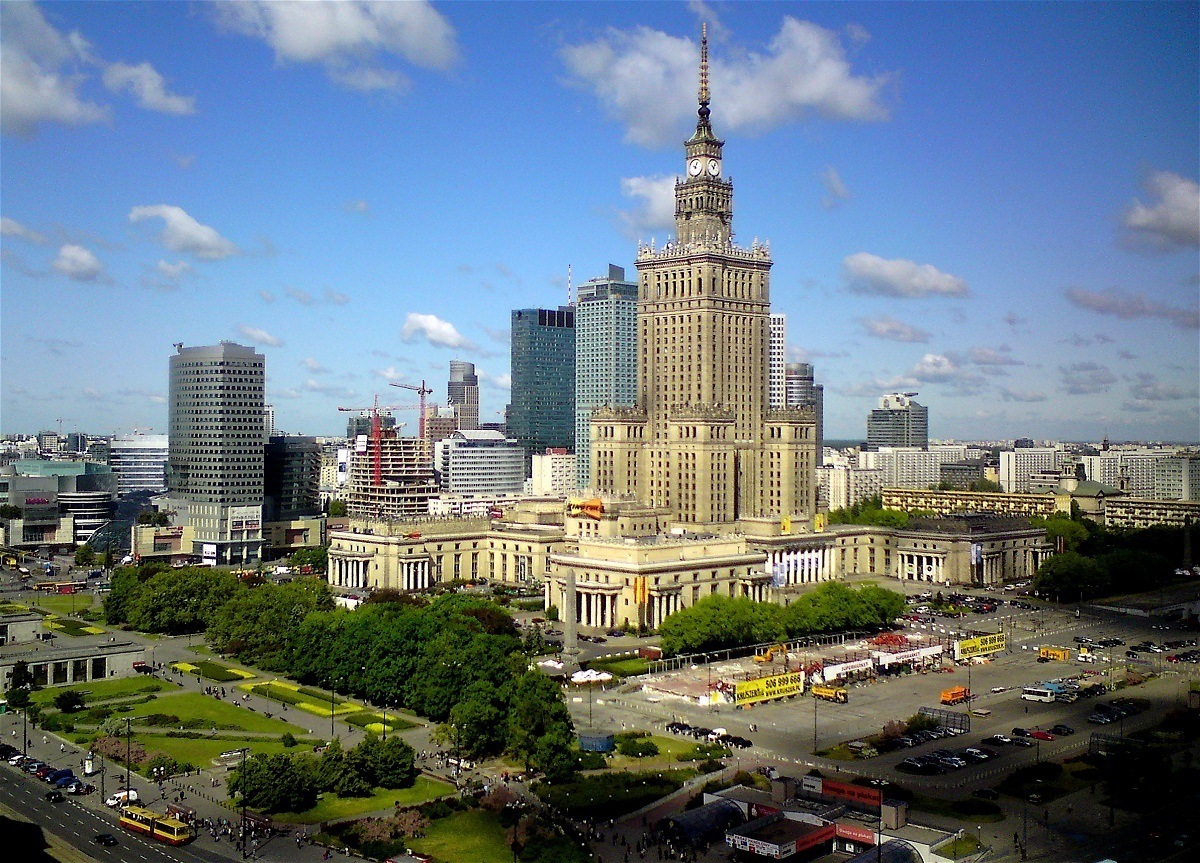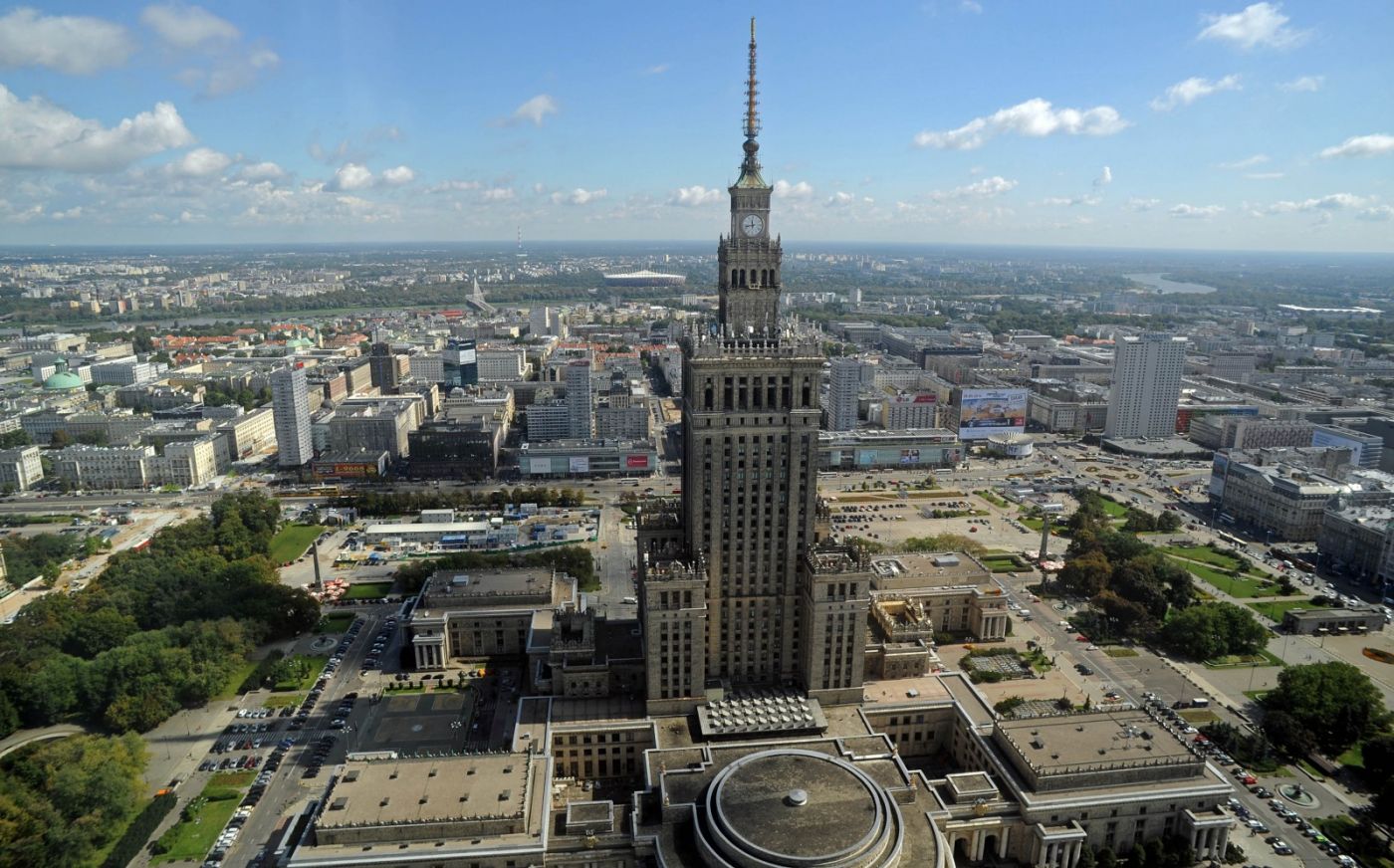Palace of Culture and Science in Warsaw Warsaw, Architecture, Building

Stalin S Building in Moscow, Russi Stock Photo Image of architecture
Palace of Culture and Science. One of the highest and most recognisable building in Warsaw can be seen from almost every part of the capital. Where did it come from? It was opened in 1955 on the initiative of Joseph Stalin as a "gift of the Soviet people for the Poles". Built by Russian workers, for a long time, it was considered to be a.

Palace of Culture and Science, Warsaw, Poland Stalinist architecture
Warsaw's most iconic building is also one of its most controversial: the Stalinist Palace of Culture and Science, which still dominates debate more than 60 years after its construction. A new book argues that the Palace is an island of socialism in the capitalist metropolis, and a hub of dissent in the face of Poland's right-wing turn.

Stalin's Empire State Building beatravelling Warsaw, Empire state
State-building symbolism and monumentality, but also modernity and innovation - these are characteristics of the buildings that were created in Poland after 1918.. Stalin, who was preparing for the Yalta conference, needed international recognition - and this meant a Poland with its capital in Warsaw. On 3rd February 1945, the National.

The Palace of Culture and Science, " Joseph Stalin Palace ", Warsaw
In the heart of downtown Warsaw stands a "gift" from former Soviet dictator Joseph Stalin: the Palace of Culture of Science, the tallest building in the country. Advertisement Communism fell in.

Soviet Stalin Palace Of Culture And Science In Warsaw, Poland Stock
Palace of Culture and Science Coordinates: 52°13′54″N 21°00′23″E The Palace of Culture and Science ( Polish: Pałac Kultury i Nauki; [a] abbreviated PKiN) [b] is a notable high-rise building in central Warsaw, Poland.

Stalin Skyscraper Residential Building On Kotelnicheskaya Embankment
Stalin offered to build the edifice in 1951, while the Soviet Union was strengthening its grip on Poland and other countries in the region. The money and most materials came from the Soviet Union; Polish and Soviet officials opened the building, then-named after Stalin, with great pomp on July 22, 1955.

Visiting the Palace of Culture and Science in Warsaw Travel Addicts
Warsaw Palace of Culture - worth knowing. By order of the Soviet leadership under Stalin, a "gift of the Soviet nation to the Polish nation" was to be built in Warsaw. The Russian architect Rudniew designed the Palace of Culture building in the style of Socialist Classicism and some elements of traditional Polish architecture.

warsaw stalin building thomasdemise Flickr
In this photo taken Monday, cars are parked in front of the Palace of Culture and Science in Warsaw, Poland. The building was a gift from Soviet leader Josef Stalin and is celebrating its 60th.

Palace of Culture and Science in Warsaw Warsaw, Architecture, Building
Stalin offered to build the edifice in 1951, while the Soviet Union was strengthening its grip on Poland and other countries in the region. The money and most materials came from the Soviet Union.

Warsaw's Palace of Culture, Stalin's 'gift' a history of cities in 50
Warsaw, Poland. The Palace of Culture and Science is the tallest building in Poland and the eighth tallest building in the European Union. It is 231 metres tall, which includes a 43-metre high spire. The building was originally known as the Joseph Stalin Palace of Culture and Science, but in the wake of destalinization the dedication to Stalin.

Stalin S Building in Moscow, Russi Stock Image Image of house, ornate
Poland - Communism, Solidarity, Warsaw Pact: The postwar Polish republic, renamed in 1952 the Polish People's Republic, occupied an area some 20 percent smaller than prewar Poland, and its population of almost 30 million rose to nearly 39 million in the following four decades. The Holocaust, together with the expulsion of several million Germans and population transfers with the U.S.S.R.

The tallest Polish building New york skyline, Skyline, City break
Stalinist architecture, [1] mostly known in the former Eastern Bloc as Stalinist style ( Russian: Сталинский стиль, romanized : Stalinskiy stil′) or Socialist Classicism, is the architecture of the Soviet Union under the leadership of Joseph Stalin, between 1933 (when Boris Iofan 's draft for the Palace of the Soviets was officially approved) an.

The Movement to Destroy Warsaw’s Tallest Building Next City
The Palace of Culture and Science, built between 1952 and 1955, was ostensibly a gift from Soviet dictator Joseph Stalin to the Polish people. At the time, Stalin was consolidating his grip on Poland with government purges and mass arrests that both suppressed and emboldened a growing anti-Soviet resistance.

Stalin’s Gift to Warsaw, 60 Years On The New York Times
1 — Moscow State University 2 — Hotel Ukraina 3 — Kudrinskaya Square Building 4 — Ministry of Foreign Affairs 5 — Palace of the Soviets (never built) 6 — Zaryadye Administrative Building (never built) 7 — Leningradskaya Hotel 8 — Red Gates Administrative Building 9 — Kotelnicheskaya Embankment Building

History of Poland's tallest building Business Insider
The tallest building in Warsaw, the "Palace" (called Pałac Kultury i Nauki in Polish, or just PKiN) leaves much to be desire aesthetically. It's a big tall building of rigid sensibilities and almost art deco accents. Designed in the communist Socialist Classicism style by architect Lev Rudnev, it's beauty does not measure to its height.

Soviet Stalin Palace of Culture and Science in Warsaw, Poland Editorial
The former Joseph Stalin Palace or the District Board of Labour Unions Building are among those awkwardly-named buildings that today can be considered iconic despite originating from the dark times of communism. Kosmos Cinema Kosmos Cinema, photo: Dariusz Gorajski / AG